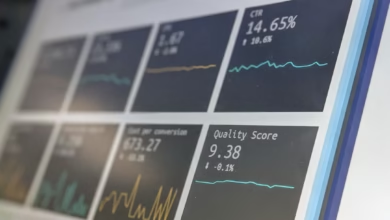Mastering Index Trading: Essential Strategies for Success in Stock and Forex Markets

In the dynamic world of financial markets, index trading has emerged as a popular strategy for both novice and seasoned traders seeking to capitalize on the price movements of key market indices like the S&P 500 and Nasdaq. Unlike traditional stock trading, which focuses on individual stocks, index trading allows investors to gain exposure to a broader market landscape, making it an attractive option in various trading disciplines, including forex trading, options trading, and commodities trading.
This comprehensive guide will help you navigate the intricacies of index trading, providing insights into market indices and their price movements. We'll delve into essential trading strategies, from day trading to swing trading, ensuring you have the tools to make informed decisions. Additionally, we’ll cover risk management and technical analysis, crucial elements for maximizing profits while minimizing losses in your trading endeavors. Whether you're interested in leveraging algorithmic trading, engaging in high-frequency trading, or exploring copy trading and social trading, understanding index trading can enhance your market analysis and trading psychology. Join us as we unpack the world of index trading and discover how to effectively harness its potential in your trading journey.
- 1. Understanding Index Trading: A Comprehensive Guide to Market Indices and Their Price Movements
- 2. Key Trading Strategies for Index Trading: From Day Trading to Swing Trading
- 3. Risk Management and Technical Analysis in Index Trading: Maximizing Profits While Minimizing Losses
1. Understanding Index Trading: A Comprehensive Guide to Market Indices and Their Price Movements
Index trading offers a unique approach for investors interested in capitalizing on the price movements of major market indices, such as the S&P 500 and Nasdaq. Understanding the fundamentals of index trading is essential for both novice and experienced traders aiming to navigate the complexities of the stock market and enhance their trading strategies.
Market indices serve as benchmarks for the overall performance of a specific segment of the market, reflecting the price movements of a selected group of stocks. By trading these indices, investors can gain exposure to a diverse range of companies without the need to buy individual stocks. This diversification can be advantageous for risk management, as it mitigates the impact of poor performance from any single stock within the index.
When engaging in index trading, traders can utilize various trading strategies, including day trading, swing trading, and scalping, to capitalize on short-term price fluctuations. Day trading involves opening and closing positions within the same trading day, while swing trading focuses on holding positions for several days or weeks to capture medium-term trends. Scalping, on the other hand, entails making numerous trades throughout the day to profit from small price changes.
In addition to traditional stock trading, index trading can be executed through various financial instruments, including derivatives trading, such as Contracts for Difference (CFDs) and Exchange-Traded Funds (ETFs). These instruments allow traders to speculate on the price movements of indices without owning the underlying assets. Furthermore, advanced techniques like algorithmic trading and high-frequency trading can enhance trading performance by automating trade execution based on predefined criteria.
Technical analysis and fundamental analysis are key components in developing effective trading strategies. Technical analysis involves analyzing historical price movements and using various indicators to forecast future price changes. In contrast, fundamental analysis examines economic indicators, earnings reports, and market news that can influence index performance. Incorporating these analyses into a trading plan can help traders better understand market trends and make informed decisions.
Trading psychology also plays a critical role in successful index trading. Emotions can significantly affect trading decisions, and developing a disciplined approach is essential for managing psychological factors that may lead to impulsive trading actions. Additionally, leverage trading and margin trading can amplify both gains and losses, necessitating a solid understanding of risk management practices.
In summary, index trading presents an opportunity for traders to engage with the market indices that drive the economy. By employing various trading strategies, embracing market analysis, and managing risk effectively, traders can navigate the dynamic landscape of index trading and potentially achieve their financial goals.
References:
– Investopedia. (2023). Index Trading: A Beginner’s Guide. Retrieved from https://www.investopedia.com/terms/i/index-trading.asp
– Bloomberg. (2023). Understanding Market Indices. Retrieved from https://www.bloomberg.com/markets/indices
– CNBC. (2023). Trading Strategies for Beginners. Retrieved from https://www.cnbc.com/trading-strategies-for-beginners
– Financial Times. (2023). The Importance of Trading Psychology. Retrieved from https://www.ft.com/content/trading-psychology
2. Key Trading Strategies for Index Trading: From Day Trading to Swing Trading
When it comes to index trading, adopting the right trading strategies can significantly impact your success and profitability. Different traders may prefer varying approaches based on their risk tolerance, market knowledge, and trading style. Here, we discuss two popular strategies: day trading and swing trading, both of which have unique characteristics and advantages.
Day trading involves executing trades within a single trading day, capitalizing on short-term price movements of indices like the S&P 500 or Nasdaq. This strategy requires active monitoring of the market and often employs technical analysis to identify entry and exit points. Day traders might utilize online trading platforms that offer advanced charting tools and real-time data, enabling them to make quick decisions. Effective risk management is crucial in day trading, as the fast-paced nature can lead to significant losses if not handled properly. Traders often leverage margin trading to amplify their positions but must be cautious of increased risk due to the use of leverage.
On the other hand, swing trading involves holding positions for several days to weeks, aiming to profit from expected price swings in index markets. This strategy allows traders to avoid the stress of daily market fluctuations while still capitalizing on medium-term trends. Swing traders often combine fundamental analysis with technical analysis, taking into account macroeconomic factors that could influence market indices. This approach allows for a more comprehensive market analysis, helping traders to identify potential bullish or bearish trends over a longer time frame. Like day trading, swing trading also benefits from effective risk management strategies to protect against unexpected market moves.
Regardless of the chosen approach, traders must develop a solid understanding of trading psychology and maintain discipline throughout their trading journey. Whether engaged in forex trading, commodities trading, or crypto trading, a well-defined trading strategy can lead to more informed decisions and better trading outcomes.
In summary, both day trading and swing trading offer viable paths for index trading enthusiasts. By understanding the nuances of each strategy and applying sound trading principles, traders can navigate the complexities of the financial markets with greater confidence and effectiveness.
3. Risk Management and Technical Analysis in Index Trading: Maximizing Profits While Minimizing Losses
In index trading, effective risk management and technical analysis are crucial components that can significantly enhance a trader's ability to maximize profits while minimizing losses. Understanding the nuances of these elements is essential for anyone involved in stock trading or other forms of trading, such as forex trading, options trading, and day trading.
Risk management involves identifying potential risks associated with trading and implementing strategies to mitigate them. This is particularly important in index trading, where market volatility can lead to rapid price movements. One common approach is to set stop-loss orders, which automatically close a position when it reaches a specified loss level. This technique helps protect capital and ensures that traders do not expose themselves to excessive losses. Additionally, leveraging tools such as position sizing can help traders manage their exposure effectively, allowing them to engage in various trading strategies without overcommitting their capital.
Technical analysis plays a vital role in index trading by providing traders with insights based on historical price movements and patterns. By analyzing charts and indicators, traders can identify trends and potential reversal points. Utilizing tools such as moving averages, Relative Strength Index (RSI), and Fibonacci retracements can enhance a trader's decision-making process. These indicators can be particularly beneficial for swing trading, scalping, and other short-term trading styles that rely on quick price changes.
Moreover, integrating technical analysis with fundamental analysis can lead to a more comprehensive market understanding. While technical analysis focuses on price action, fundamental analysis assesses economic indicators, earnings reports, and geopolitical events that may impact market indices. This dual approach can be advantageous in algorithmic trading, high-frequency trading, and online trading platforms where data-driven decisions are pivotal.
Lastly, trading psychology should not be overlooked. Maintaining discipline and emotional control is essential in any form of trading, whether it be derivatives trading, ETF trading, or even binary options. Traders must remain objective, avoid impulsive decisions, and stick to their predefined risk management and trading strategies.
In summary, combining effective risk management with thorough technical analysis can empower traders in the index trading landscape. By implementing these principles, traders can navigate the complexities of the market, enhance their profitability, and create a sustainable trading career.
In conclusion, index trading presents a dynamic and versatile avenue for traders looking to capitalize on the price movements of major market indices like the S&P 500 and Nasdaq. By understanding the fundamentals of index trading and implementing effective trading strategies such as day trading and swing trading, traders can navigate the complexities of the market with greater confidence. Incorporating robust risk management and technical analysis into your trading plan is essential for maximizing profits while minimizing potential losses.
As the landscape of trading continues to evolve with the rise of online trading platforms and algorithmic trading, staying informed about the latest trends in stock trading, forex trading, and other derivatives trading options becomes increasingly important. Whether you are engaging in high-frequency trading or exploring the possibilities of copy trading and social trading, maintaining a strong grasp of trading psychology and market analysis will aid in your success.
Ultimately, whether you choose to delve into commodities trading, crypto trading, or leverage trading, understanding index trading serves as a foundational skill that can enhance your overall trading experience. With the right strategies and mindset, traders can effectively harness the power of market indices to achieve their financial goals.
References:
[Insert relevant references here]




